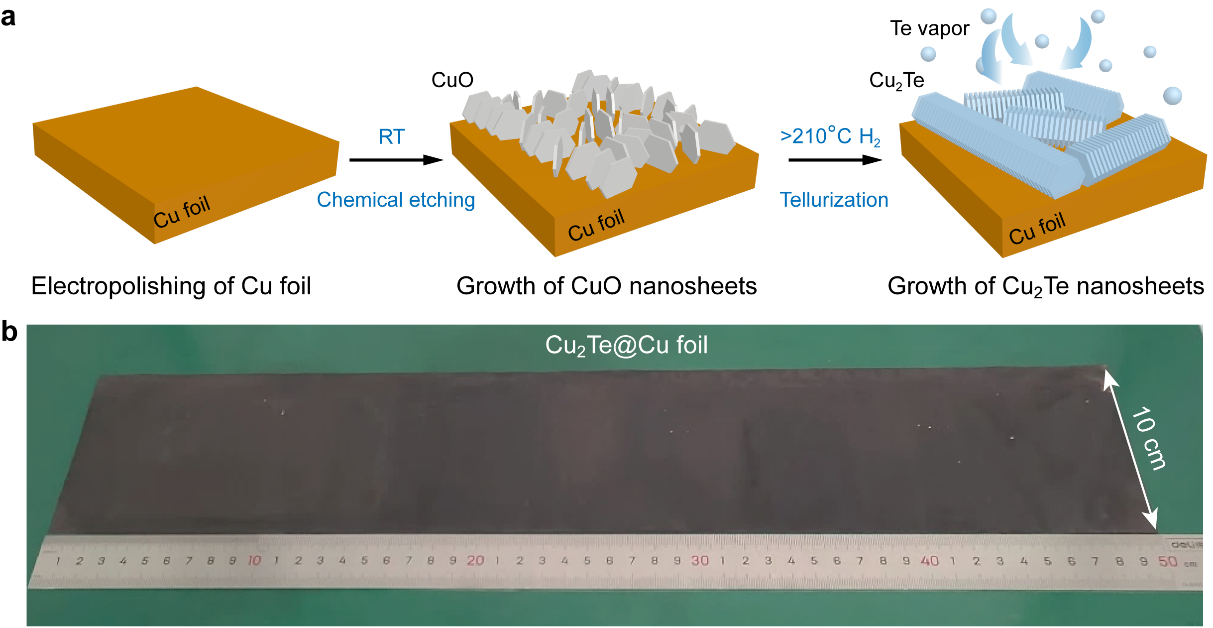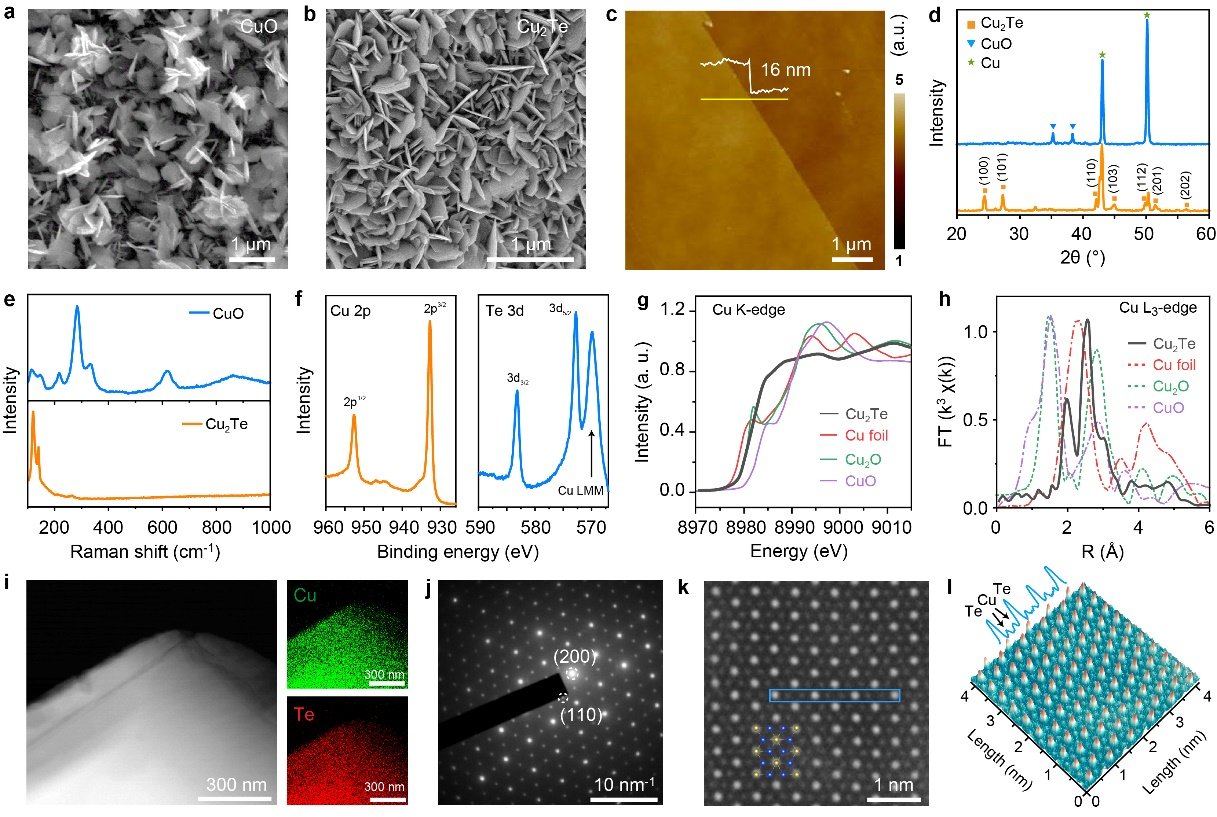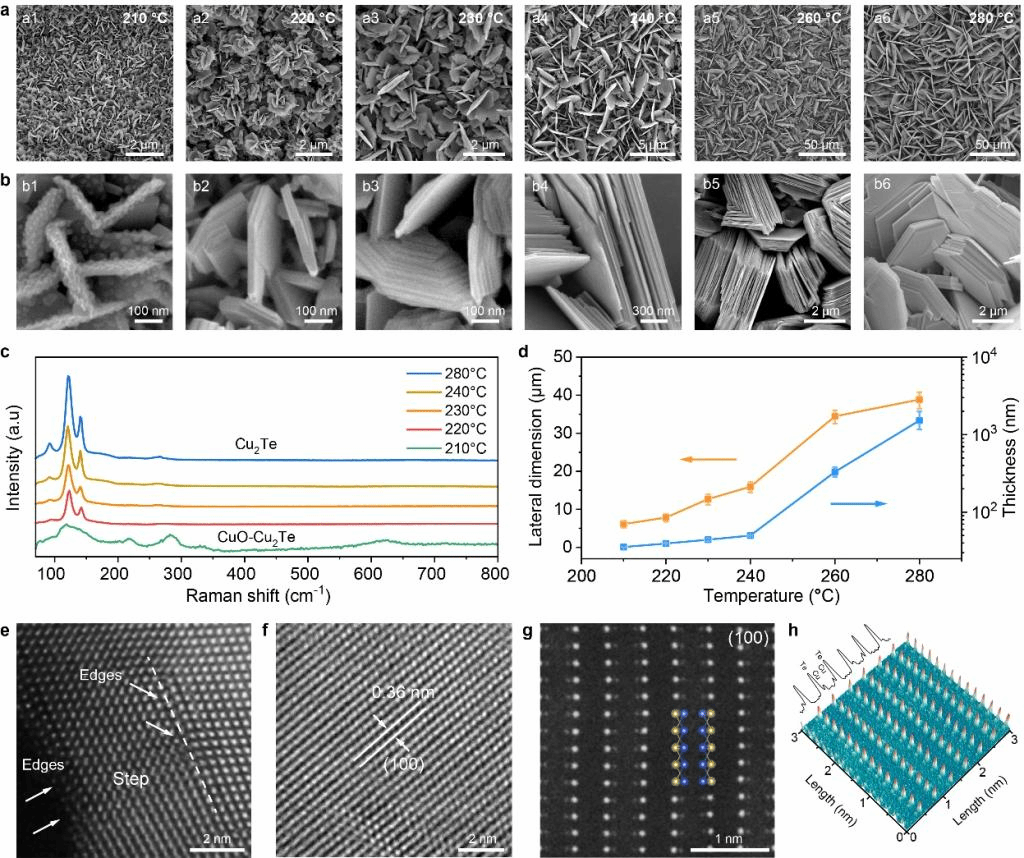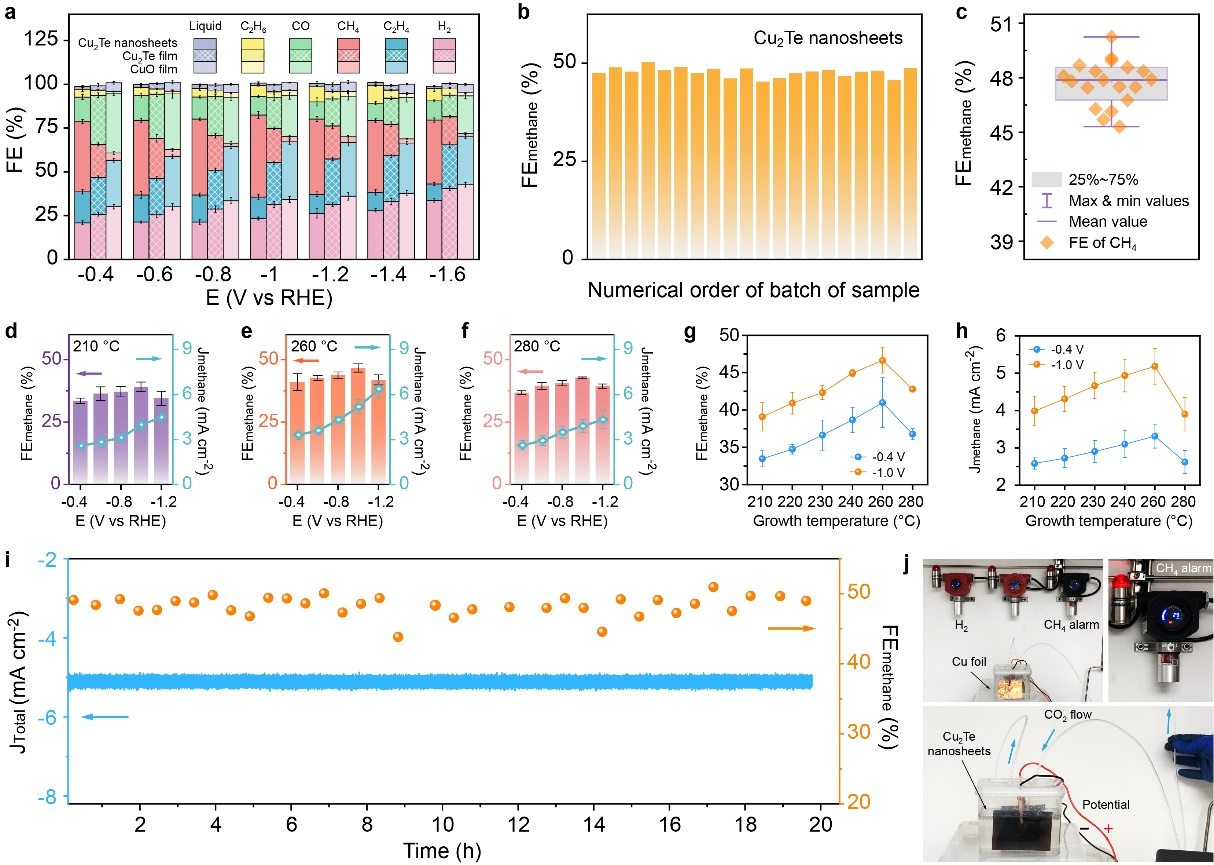1. Background:
Two-dimensional materials have attracted great interest and attention in the field of surface interface catalysis due to their special geometry and adjustable electrical properties. Copper-based nanomaterials are commonly used catalysts in electrocatalytic CO2 reduction reactions. However, copper-based two-dimensional layered materials inevitably have problems such as surface chemistry and poor stability, which is not conducive to improving their CO2RR activity. Exploring large-scale controllable preparation methods for copper-based two-dimensional layered materials rich in catalytic active sites is imperative.
2. Summary of results:
This study proposed an edge-oriented growth method for large-area two-dimensional Cu2Te nanosheet arrays based on copper foil substrates. This method is achieved through a two-step wet chemical etching and vapor deposition process. This highly exposed Cu2Te nanosheet edge structure has a large number of anchored active sites, which significantly improves the Faraday efficiency of CO2 reduction to CH4 at potentials as low as -0.4 V (relative to reversible hydrogen electrodes), and effectively inhibits the hydrogen evolution reaction. In Flow cell electrolysis, the catalyst achieves a methane-producing faraday efficiency of approximately 63% at a current density of 300 mA cm-2. This research will provide new possibilities for the development of high-efficiency two-dimensional layered copper-based CO2RR electrocatalysts with high scale and low energy consumption.
3. Pictorial Guide
This method is suitable for the batch preparation and controlled growth of vertical arrays of large-area copper-based two-dimensional layered materials and the controlled growth of edge-oriented two-dimensional single crystal hexagonal Cu2Te nanosheet arrays. The successful preparation of Cu2Te nanosheet array based on self-limiting domain template CVD method was confirmed by sample analysis, and the synthesis of large-area two-dimensional single-crystal Cu2Te nanosheet array was successfully realized by two-step growth strategy.

Figure 1. A schematic diagram of CVD growth of two-dimensional Cu2Te nano-sheet vertical array

Figure 2. Characterization of edge-oriented two-dimensional Cu2Te nanosheet arrays
In this paper, the controllable generation of edge-oriented Cu2Te nanosheets is realized, and the influence of temperature on its structure is discussed. Based on the potential advantages of Cu2Te nanosheet edge structure in the field of catalysis, the electrocatalytic CO2RR test was carried out in H-type electrolytic cell.

Figure 3. Microstructure of two-dimensional Cu2Te nanosheets.

Figure 4. Performance test of Cu2Te nanoplate catalyst for electrocatalytic CO2 reduction reaction in H-type electrolytic cell
Finally, this paper provides a strategy to achieve large-area controllable growth of edge-oriented two-dimensional Cu2Te nanosheet arrays on copper foil substrates by chemical etching and CVD. The vertical array structure of Cu2Te nanosheets produces highly exposed catalytic active sites, thereby enhancing the electrocatalytic reduction reaction performance from CO2 to CH4. The prepared Cu2Te nanocatalyst exhibits enhanced methane selectivity and stability at low potential (-0.4V). The preparation method of this catalyst is suitable for industrial-scale production and application. This provides more new possibilities for exploring high-efficiency and low-energy CO2 electroreduction catalysts.